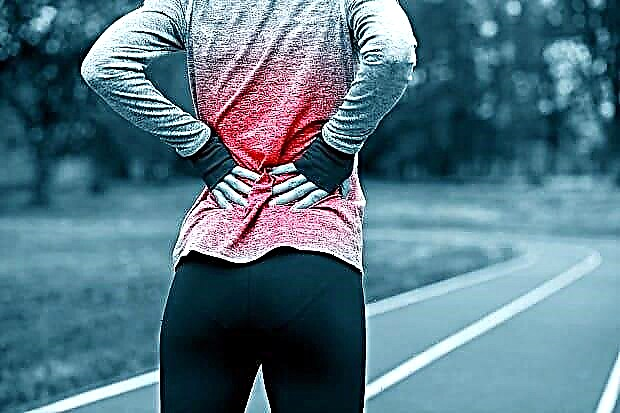Control standards are an important tool in determining the level of physical fitness of schoolchildren during the educational process.

When fulfilling the curriculum for the course "Physical culture", the current, intermediate and final control of the implementation of educational standards is carried out.
Primary school students

Younger school age is an important period in the formation of the correct motor skill. The correct use of exercises will contribute to the emergence of an undistorted structure of movements in running, strengthening the muscles of the legs, developing endurance, strength and coordination of movements.
Physical education classes develop children's communication skills, interaction with each other in team games during the lesson.
Children from the preparatory medical group have limited cyclic workload. The main task in working with such children is health promotion with their subsequent transfer to the main medical group. The peculiarity of working with such children is to dose loads in order not to harm their health.
If there are contraindications to some of the exercises, these children are exempted from doing them. When it is forbidden to fulfill the standards, children perform exercises on the technique, which allows them to master the exercise without violating the doctor's recommendation.
Shuttle run 3x10 m
Shuttle running develops endurance and dexterity, coordination abilities, correct breathing, increased blood circulation. When shuttle running, the child needs to quickly determine that part of the distance at which acceleration is required, and that at which braking is necessary.
Standards in shuttle running for class 1: 9.9 for boys and 10.2 for girls. In grade 2, respectively - 9.1 s and 9.7 s, in grade 3 - 8.8 s and 9.3 s, respectively, in grade 4 - 8.6 s and 9.1 s. respectively.
Running 30 m
The main goal of classes in primary school is to master the skill of free and straight-line running, the formation of correct posture.
Standards in running 30 meters for boys in grade 1 - 6.1 s, girls - 6.6 s, for the second grade, respectively - 5.4 s and 5.6 s, 3 grades - 5.1 s and 5.3 s, 4 grades - 5.0 s and 5 , 2 p.
Running 1000 m
In the first grade, the foundations of a uniform run are laid, physical qualities are developed. In the 2nd grade, the foundations of tactics are laid, endurance is developed. In grades 3 and 4, further training and development of endurance to stress is carried out.
From 1 to 4 grades, time is not recorded at a distance of 1000 m, and in grade 4, the standard for boys is 5.50, for girls - 6.10.
High school

In the middle grades of the school, skills and exercises are taught outside the form of play, the correctness and accuracy of the basic elements of running are practiced. In the classroom, the requirements for the correctness and technique of the running exercise must not be reduced.
During this period, during training, attention is focused on the importance of independent training in motor activity. Correct breathing and posture, the position of the arms, head and torso are the components of a competent running technique.
In middle school age, the body grows rapidly and the muscular system develops. Therefore, during classes it is important to avoid unnecessary stress.
Shuttle run 4x9 m
In secondary school, the mastering of basic movements in shuttle running continues, the accuracy and speed of motor actions are being honed.
Standards for shuttle running in grade 5: 10.2 s - boys and 10.5 s - for girls, in grade 6 - 10.0 s and 10.3 s, respectively, for grade 7: 9.8 s and 10.1 s, for grade 8: 9, 6 s and 10.0 s.
Running 30 m
Learning to move along a distance deepens. Attention is focused on the rationality of running, the absence of excessive stress, freedom in all movements.
The standard for a distance of 30 m in grade 5: 5.7 s - boys and 5.9 s for girls, for grade 6: 5.5 s and 5.8 s, respectively, for grade 7: 5.0 s and 5.3 s, respectively, for grade 8, respectively 4, 8 s and 5.1 s.
Run 60 m
Attention is paid to the development of the maximum running speed due to the correct takeoff run, strong movement along the distance, optimal torso tilt, rhythmic and correct movement of the arms.
The standard for a distance of 60 m in grade 5: 10.2 s - boys and 10.3 s for girls, for grade 6: 9.8 s and 10.0 s, respectively, for grade 7: 9.4 s and 9.8 s, respectively, for grade 8: 9, 0 s and 9.7 s.
Running 300 m
In the 300 m run, attention is paid to the technique of passing the turning sections of the distance. Attention is also paid to proper breathing while running.
Standard for class 5 at a distance of 300 m - 1.02 - boys and 1.05 for girls, for grade 6: 1.00 and 1.02, respectively, for grade 7: 0.58 s and 1.00, for grade 8: 0.55 s and 0, 58s.
Running 1000 m
In 1000 m running, attention is paid to the improvement of running technique and the distribution of forces along the distance, the choice of the optimal pace of running, and finishing.
The standard for this distance is in grade 5: 4.30 for boys and 5.00 for girls, for 6th grade - 4.20 - for boys, for 7th grade - 4.10 - for boys, for 8th grade - 3.50 - for boys and 4.20 for girls.
Run 2000 m
For a positive all-round impact on health promotion, development of coordination skills, improvement of running, it is recommended to conduct classes outdoors.
Pupils of grades 5 and 6 cover a distance of 2000 m without time fixing. In the 7th grade, the standard for this distance is 9.30 - boys and 11.00 for girls, for the 8th grade, respectively, 9.00 and 10.50.
Cross 1.5 km
In the 1.5 km cross-country, attention is paid to tactical thinking, the choice of the optimal speed and pace, freedom of movement.
Class 5 standards - 8.50 - boys and 9.00 for girls, in the 6th grade - 8.00 and 8.20, respectively. in grade 7 - 7.00 and 7.30, respectively.
High school students

In the senior grades, lessons are conducted aimed at technical improvement, further stimulation of independent studies, the formation of students' habit of independently practicing physical education.
For senior pupils, the dynamics of loads is approaching the level of sports training. Students prepare for athletics competition.
Shuttle run 4x9 m
When performing, attention is paid, first of all, to the technique of execution, while increasing the requirements for the speed of execution of movements.
Standards for boys and girls, respectively: in grade 9 - 9.4 s and 9.8 s, in grade 10 - 9.3 s and 9.7 s, in grade 11 - 9.2 s and 9.8 s.
Running 30 m
Exercises are used that, coupled, affect the further improvement of running technique and coordination abilities. Further formation of students' need for independent physical exercises is carried out.
Standards in running 30 meters for grade 9 - 4.6 s for boys and 5.0 s for girls, for grade 10 - 4.7 s for boys and 5.4 s for girls, for grade 11 - 4.4 s for boys and 5.0 s for girls ...
Run 60 m
The improvement of running technique at this distance continues. Maximum running speed and rhythm of movements are achieved. The standards for running 60 meters for grade 9 are 8.5 seconds for boys and 9.4 seconds for girls.
Run 2000 m
Attention is drawn to the need for the distribution of forces over the entire distance, the technique of movement in each of the sections.
Class 9 standards - 8.20 for boys and 10.00 for girls, for 10th grade - 10.20 for girls.
Running 3000 m
In the 3000 m run, students' attention is paid to the optimal distribution of forces, the consistency of the breathing rhythm with the frequency of steps.
Class 10 standards - 12.40 for boys, for grade 11 - 12.20 for boys.
What do physical education lessons at school give?

In primary school age, due to motor activity, muscle and bone tissue develops more actively, metabolic processes in the body are stimulated, and its protective properties increase. Without specially organized and regular exercises, it is impossible to achieve the level of preparedness that is systematically engaged in physical exercises.
If the child does not exercise regularly, then the lack of movement leads to a decrease in the growth of the body, and sometimes to muscle atrophy, obesity. However, an unnecessarily large load is harmful, since at this age a large amount of energy is needed, first of all, for the processes of growth and development.
School physical education lessons strengthen health, develop physical qualities, and contribute to the formation of motor skills.
Physical education lessons provide knowledge both about the sphere of physical culture and about sports in general, a healthy lifestyle, form organizational skills, introduce them to independent studies, and develop character.
Running exercises allow the cardiovascular system, musculoskeletal system, respiratory system and other body systems to develop evenly. Cyclic exercises improve respiratory mechanisms, increase VC indicators, increase the volume of the chest, its excursion. Regular exercises improve nervous processes, contribute to the formation of mental and emotional stability.
Dosing the load, selecting exercises and constantly monitoring signs of fatigue allows a differentiated approach to students.
Physical education lessons provide an opportunity to compensate for the lack of motor activity that occurs during the educational process.
Regular classes, both at school and at home, increase resistance to pathogenic factors, allow you to recover faster in case of illness.
You can practice running exercises almost anywhere: indoors, in a stadium, a small sports ground, in a park or outside the city, and there is no need to purchase any additional and expensive sports equipment.
Physical education often contributes to the disclosure of athletic talents, which are further supported and developed by experienced teachers. This is how ordinary schoolchildren often become famous athletes and champions in the future.
Exercise has a positive effect on the health of the body. Thanks to regular exercises, the muscular and skeletal systems are strengthened, metabolism is improved, the range of mobility of the joints and spine increases, and rhythmic and deep breathing promotes better blood circulation.
Thus, physical education in general and running exercises in particular are a simple and affordable means of physical education that has a positive effect on the body in a wide range of loads, and control standards allow you to track the dynamics of physical development and correctly distribute the load on students during classes.









